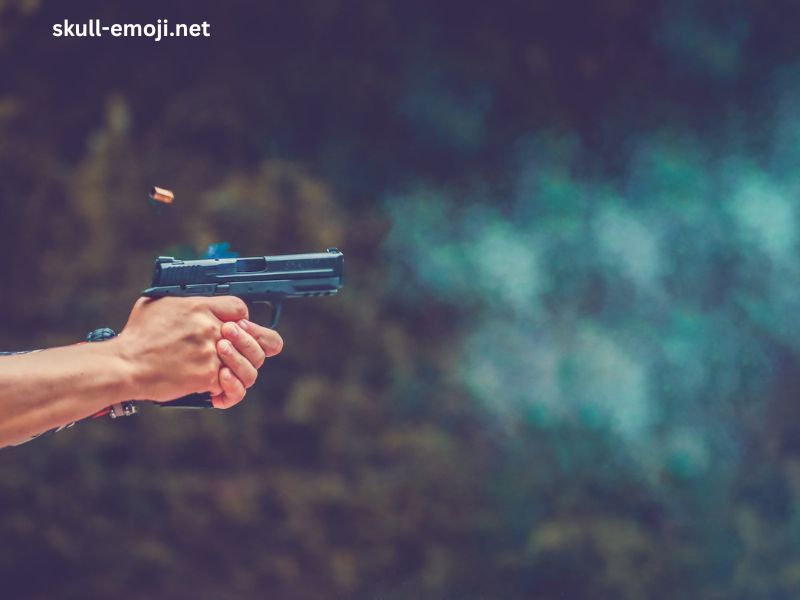The speed of a bullet is one of the most fascinating aspects of firearm physics, with bullets traveling at velocities that can reach up to several thousand feet per second. The speed of a bullet is influenced by a variety of factors, including the type of firearm, the caliber of the bullet, the gunpowder used, the length of the barrel, and the bullet’s aerodynamics. Understanding how fast a bullet travels is essential for grasping the mechanics of shooting, ballistics, and even the science behind how projectiles move through different media, whether it’s air, water, or other substances.
In this article, we will dive deep into the different variables that determine bullet speed, the typical velocities of bullets from various types of firearms, the effects of external conditions on a bullet’s speed, and the implications of these factors in different fields, such as law enforcement, military applications, and competitive shooting.
1. Basic Principles of Bullet Speed
The speed of a bullet is most commonly expressed in feet per second (fps) or meters per second (m/s). These units measure the velocity at which a bullet exits the muzzle of the gun, referred to as muzzle velocity. After leaving the gun, the bullet slows down due to air resistance, gravity, and other factors.
To understand bullet speed, it’s important to grasp the basic physics behind shooting. A bullet is propelled forward by rapidly expanding gases caused by the ignition of gunpowder or other propellants in the cartridge. As these gases push the bullet down the barrel, it gains speed. The length and characteristics of the barrel, the bullet’s design, and the type of gunpowder used all impact how much speed the bullet acquires by the time it exits the muzzle.
Types of Bullets and Their Speed
Different types of bullets travel at different speeds. These variations stem from the differences in design, caliber, and the types of firearms they are used in. Below are common types of firearms and the general ranges of bullet speeds they produce:
- Handguns: Bullets fired from handguns generally travel at speeds between 800 fps (244 m/s) to 1,500 fps (457 m/s). The exact speed depends on factors such as the caliber and type of handgun. For example, a 9mm bullet typically has a muzzle velocity of around 1,200 fps (366 m/s), while a .45 ACP bullet is slower, often traveling at approximately 850 fps (259 m/s).
- Rifles: Bullets from rifles travel significantly faster than those from handguns due to the longer barrel and more powerful propellant. Rifle bullets often exceed speeds of 2,000 fps (610 m/s), with some high-velocity rounds reaching speeds upwards of 4,000 fps (1,220 m/s). For instance, the .223 Remington, a common rifle cartridge, typically has a muzzle velocity of around 3,000 fps (914 m/s).
- Shotguns: Shotguns usually fire shot pellets or slugs at much lower speeds than rifles. The typical speed for a shotgun slug is around 1,500 fps (457 m/s), and shot pellets usually travel even slower. The larger surface area of shotgun projectiles and the shorter barrel length contribute to the slower velocity compared to rifles.
- Sniper Rifles: Specialized sniper rifles are designed to shoot over long distances with great precision. Sniper rifle bullets can travel at speeds between 2,500 fps (762 m/s) to 3,500 fps (1,067 m/s) or higher, depending on the caliber. The .50 BMG, for example, has a muzzle velocity of around 2,800 fps (853 m/s).
2. Factors Affecting Bullet Speed
Several factors influence how fast a bullet travels. These variables can alter bullet velocity in different ways, depending on the situation. Some of the most important factors include:
Caliber
The caliber of a bullet refers to its diameter and affects its speed significantly. Smaller caliber bullets, such as .22 caliber rounds, tend to have higher velocities because they encounter less air resistance and require less energy to propel. Larger caliber rounds, like .45 ACP or .50 BMG, may travel more slowly due to their greater mass, but they also deliver more kinetic energy.
Barrel Length
The length of a firearm’s barrel plays a crucial role in determining the speed of a bullet. Longer barrels provide more time for expanding gases to push the bullet, resulting in higher muzzle velocities. For example, a rifle with a 24-inch barrel will generally produce faster bullet speeds than the same rifle with a 16-inch barrel. Conversely, short-barreled firearms, like handguns, result in lower bullet velocities due to the reduced time that the bullet spends accelerating.
Type of Gunpowder
The chemical composition and amount of gunpowder or propellant used in a cartridge affect the speed at which the bullet is ejected. Modern smokeless powder produces greater gas expansion and pressure than black powder, resulting in faster bullet speeds. The grain size of the powder also matters: finer powders burn more quickly, giving a faster initial boost to the bullet.
Bullet Weight and Shape
The mass and shape of the bullet can influence its speed. Heavier bullets require more force to accelerate and thus typically travel slower than lighter bullets. However, they may retain more energy over long distances. Additionally, the shape of the bullet plays a key role in determining its aerodynamic efficiency. Bullets with pointed, streamlined designs (like boat-tail bullets) experience less air resistance and tend to maintain their velocity better over long distances than bullets with flat or rounded tips.
External Conditions
Environmental factors such as temperature, humidity, and altitude can all impact bullet speed. Bullets travel faster in hot, dry conditions because the air is less dense, offering less resistance. Similarly, bullets fired at high altitudes will travel faster than those fired at sea level due to the thinner atmosphere. Conversely, cold temperatures and humid conditions slow bullets down because the denser air creates more drag.
3. Supersonic, Subsonic, and Hypersonic Speeds
Bullets can be classified based on their speed relative to the speed of sound. The speed of sound in air is approximately 1,125 fps (343 m/s), although this varies slightly with temperature and altitude.
- Subsonic Bullets: These bullets travel slower than the speed of sound, typically below 1,100 fps (335 m/s). Subsonic rounds are often used in suppressed firearms to reduce the noise caused by the bullet breaking the sound barrier. For example, .300 AAC Blackout rounds can be loaded to subsonic speeds to enhance stealth in certain tactical situations.
- Supersonic Bullets: Most modern firearms fire bullets that exceed the speed of sound, making them supersonic. These bullets typically travel at speeds between 1,200 fps (366 m/s) and 4,000 fps (1,220 m/s). Supersonic bullets create a distinctive sonic boom, which can be heard as a sharp crack.
- Hypersonic Bullets: Although uncommon, some experimental firearms and military-grade weaponry fire hypersonic bullets, which travel at speeds greater than Mach 5, or five times the speed of sound (approximately 5,600 fps or 1,707 m/s). These are typically used in highly specialized military applications, such as railguns or advanced anti-aircraft systems.
4. Real-World Applications and Implications
Bullet speed has important implications for various industries and applications. Here are a few examples of how bullet velocity is critical in different contexts:
Military and Law Enforcement
In military and law enforcement contexts, bullet speed is crucial for determining the effectiveness of firearms in combat or tactical scenarios. Faster bullets are better suited for long-range shooting because they are less affected by environmental factors like wind drift and gravity. Snipers, for instance, rely on high-velocity rounds to hit targets accurately from a distance. In contrast, subsonic rounds are preferred for covert operations, where stealth is more important than range.
Competitive Shooting
In competitive shooting sports, bullet speed plays a vital role in accuracy and performance. For long-distance target shooting, high-velocity rounds are preferred to minimize drop and compensate for windage. Precision shooters must account for bullet speed when calculating their shot trajectory, as faster bullets have flatter trajectories and require less adjustment for gravity and air resistance.
Hunting
For hunters, bullet speed is essential for ensuring that their shot has enough energy to humanely take down game animals. High-velocity bullets are typically used for hunting larger animals, as they can deliver enough kinetic energy to penetrate thick hides and reach vital organs. However, speed must be balanced with accuracy, as excessive speed can lead to less precision.
Conclusion
The speed at which a bullet travels is a complex function of multiple factors, including the firearm used, bullet design, propellant, and environmental conditions. From handguns with slower bullets to high-velocity sniper rifles and experimental hypersonic rounds, the science of bullet speed is a crucial element in ballistics. Whether for military applications, competitive sports, or hunting, understanding how fast a bullet travels helps improve shooting accuracy, effectiveness, and safety.



